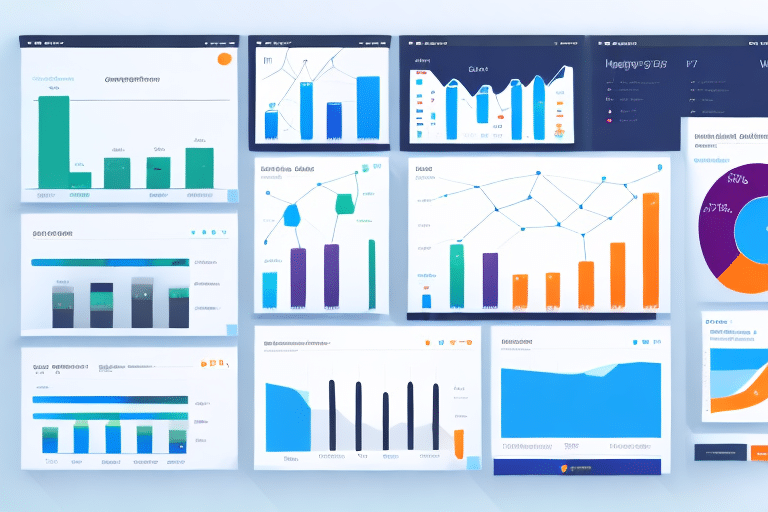The Ecommerce Holiday Survival Guide: Tips for a Stress-Free Season
The holiday season is an exciting time for ecommerce businesses. With increased traffic and sales, the potential for growth is enormous. However, for many online retailers, the holiday season can be a stressful and overwhelming time. To help you navigate the holiday ecommerce landscape, we’ve put together this comprehensive survival guide. Read on for tips on how to make the most of the holiday season without sacrificing your sanity.
Overview of the Holiday Ecommerce Landscape
The holiday season is a crucial time for ecommerce businesses. In 2023, holiday ecommerce sales in the US alone are projected to reach approximately $250 billion, representing a significant growth from previous years [Statista]. With more and more people turning to online shopping, the holiday season is becoming increasingly competitive. Understanding the current ecommerce landscape, including key trends and consumer behavior, is essential to position your business for success.
One key trend in the holiday ecommerce landscape is the continued rise of mobile shopping. In 2023, mobile devices are expected to account for nearly 60% of all ecommerce sales during the holiday season, underscoring the importance of having a mobile-friendly website and optimizing your online store for mobile devices [eMarketer].
Another important factor to consider is the lasting impact of the COVID-19 pandemic on holiday shopping behaviors. While in-person shopping has seen a rebound, many consumers continue to prefer the convenience and safety of online shopping. Additionally, supply chain disruptions and shipping delays may impact delivery times and customer satisfaction. It’s crucial for ecommerce businesses to communicate clearly with customers about any potential delays and to have contingency plans in place to address any issues that may arise.
Other emerging trends include the increased use of artificial intelligence for personalized shopping experiences, the growth of social commerce, and the importance of sustainable and ethical business practices, which are increasingly influencing consumer decisions [Forbes].
Identifying Your Target Audience and Creating a Customer Avatar
One of the most important steps in developing a successful holiday sales strategy is identifying your target audience. Who are your ideal customers? What are their needs, desires, and pain points? Creating a customer avatar can help you develop a deep understanding of your target audience and tailor your marketing efforts accordingly. Consider factors such as age, gender, location, income, and interests when creating your avatar.
Once you have created your customer avatar, it's important to use this information to inform your marketing strategy. For example, if your target audience is primarily young adults interested in fitness, you may want to focus your marketing efforts on social media platforms such as Instagram and TikTok, where this demographic is most active. Additionally, you may want to create content that speaks directly to their interests and pain points, such as workout tips and healthy recipes. By tailoring your marketing efforts to your target audience, you can increase the effectiveness of your holiday sales strategy and drive more sales.
Utilizing data analytics tools to gather insights about your customers can further refine your customer avatar and enhance targeted marketing efforts [HubSpot].
Developing a Holiday Sales Strategy That Works for Your Business
The holiday season presents a unique set of challenges for ecommerce businesses. Developing a holiday sales strategy that works for your business is key to success. Consider factors such as your budget, target audience, and competition when developing your strategy. Will you be offering promotions or discounts? How will you differentiate yourself from your competitors? Having a clear plan in place can help you stay focused and avoid unnecessary stress.
One important aspect to consider when developing your holiday sales strategy is your website's user experience. Ensure that your website is easy to navigate and has a clear call-to-action for holiday promotions. Additionally, consider implementing live chat or chatbot features to provide quick and efficient customer support during the busy holiday season.
Another factor to keep in mind is your shipping and fulfillment process. With the increase in online orders during the holidays, it's important to have a reliable and efficient shipping process in place. Consider offering free shipping or expedited shipping options to entice customers to make a purchase from your business. Additionally, partnering with reliable logistics providers can help mitigate the impact of shipping delays [Shopify Blog].
- Set clear sales goals: Define what success looks like for your holiday season.
- Optimize inventory management: Ensure you have adequate stock levels.
- Enhance marketing efforts: Utilize multi-channel marketing to reach your audience.
- Leverage data analytics: Monitor performance and adjust strategies in real-time.
Setting Clear and Achievable Goals for the Holiday Season
Setting clear and achievable goals for the holiday season is essential for success. Consider factors such as sales targets, conversion rates, and website traffic when setting your goals. Having specific, measurable goals can help you stay motivated and track your progress throughout the holiday season.
It's also important to prioritize your goals and focus on the ones that will have the biggest impact on your business. For example, if increasing website traffic is a priority, consider investing in targeted advertising or optimizing your website for search engines. Additionally, make sure to communicate your goals with your team and provide them with the necessary resources and support to help achieve them. By setting clear and achievable goals and prioritizing them effectively, you can maximize your success during the holiday season.
- Increase Sales: Aim for a specific percentage growth compared to the previous year.
- Boost Conversion Rates: Implement strategies to turn more visitors into buyers.
- Enhance Customer Engagement: Focus on improving interactions with customers.
- Expand Customer Base: Attract new customers through targeted marketing initiatives.
Preparing Your Ecommerce Website for Increased Traffic and Sales
Preparing your ecommerce website for increased traffic and sales is crucial to the success of your holiday campaign. Ensure that your website can handle increased traffic by optimizing load times and server capacity. Make sure your website is mobile-friendly and easy to navigate. Conduct regular tests to ensure that your website is functioning properly. Investing time and resources into website preparation can pay off significantly during the holiday season.
In addition to optimizing load times and server capacity, it is important to also focus on the content of your website. Make sure your product descriptions are clear and concise, and that your images are high-quality and showcase your products in the best possible light. Consider offering special promotions or discounts to entice customers to make a purchase. Don't forget to also have a clear and easy-to-find return policy, as this can help build trust with your customers and encourage them to make a purchase.
- Optimize Site Speed: Use tools like Google PageSpeed Insights to identify and fix speed issues.
- Enhance Mobile Responsiveness: Ensure your site is fully functional on all devices.
- Improve Navigation: Simplify the user journey to make finding products easier.
- Ensure Security: Implement SSL certificates and secure payment gateways.
Creating Compelling Holiday-Themed Content and Promotions
Creating compelling holiday-themed content and promotions is key to capturing the attention of holiday shoppers. Consider creating gift guides, holiday recipes, and blog content that speaks to the interests and needs of your target audience. Develop promotions that offer real value to your customers, such as free shipping or bundled products. Make sure your promotions are consistent with your brand messaging and resonate with your target audience.
It's also important to keep in mind the timing of your holiday-themed content and promotions. Start planning and creating your content well in advance of the holiday season to ensure that it is ready to launch when your customers are starting to think about their holiday shopping. Consider using social media and email marketing to promote your holiday content and promotions to your audience. By creating timely and relevant content and promotions, you can increase engagement with your brand and drive sales during the holiday season.
- Gift Guides: Curate lists of products tailored to different customer segments.
- Holiday Discounts: Offer limited-time discounts to create urgency.
- Bundle Offers: Combine related products at a special price.
- Interactive Content: Use quizzes or personalized recommendations to engage users.
Leveraging Social Media Platforms to Reach Your Target Audience
Social media platforms present a valuable opportunity to reach and engage with your target audience during the holiday season. Consider developing a social media strategy that includes regular posts, targeted ads, and influencer partnerships. Make sure your social media content is consistent with your brand messaging and resonates with your target audience.
It's important to keep in mind that different social media platforms have different audiences and require different approaches. For example, Instagram is a highly visual platform that is popular among younger demographics, while LinkedIn is more business-oriented and appeals to professionals. Tailor your content and messaging to each platform to maximize engagement and reach.
- Instagram: Utilize Stories, Reels, and shopping features to engage users.
- Facebook: Leverage groups, live videos, and targeted advertising.
- Twitter: Engage in real-time conversations and trend-based marketing.
- Pinterest: Share visually appealing pins that link back to your product pages.
Optimizing Your Product Listings for Holiday Shoppers
Optimizing your product listings for holiday shoppers is essential to the success of your holiday ecommerce campaign. Make sure your product listings contain detailed descriptions, high-quality images, and clear pricing information. Consider highlighting your top-selling products and offering suggestions for related products to help shoppers find what they’re looking for. Ensure that your product pages are optimized for search engines to increase visibility and drive organic traffic.
Another important aspect of optimizing your product listings for holiday shoppers is to offer promotions and discounts. Consider offering free shipping, buy-one-get-one deals, or percentage discounts to entice shoppers to make a purchase. Make sure to prominently display these promotions on your product pages and in your marketing materials.
It’s also important to ensure that your website is mobile-friendly. Many shoppers will be browsing and making purchases on their mobile devices, so it’s crucial that your website is easy to navigate and use on a smaller screen. Test your website on various mobile devices to ensure that it’s optimized for mobile users.
- SEO Optimization: Use relevant keywords in product titles and descriptions.
- High-Quality Images: Showcase products with clear, high-resolution images.
- Customer Reviews: Display reviews and ratings to build trust.
- Clear Pricing: Ensure pricing is transparent and easy to understand.
Streamlining Shipping and Order Fulfillment Processes
Streamlining your shipping and order fulfillment processes can help you manage the increased volume of orders during the holiday season. Consider partnering with a reliable shipping carrier and offering multiple shipping options to accommodate different customer needs. Make sure your order fulfillment process is streamlined and efficient to avoid delays and customer frustration.
- Multiple Shipping Options: Offer standard, expedited, and same-day shipping where possible.
- Automate Order Fulfillment: Use automation tools to speed up processing.
- Inventory Management: Keep accurate track of stock levels to prevent overselling.
- Real-Time Tracking: Provide customers with tracking information for their orders.
Implementing Effective Customer Service Strategies During the Busy Season
Implementing effective customer service strategies during the busy holiday season is crucial to maintaining customer satisfaction and loyalty. Consider investing in customer service training for your team to ensure that they are equipped to handle customer inquiries and issues promptly and professionally. Develop a system for tracking customer feedback and responding to customer complaints or issues in a timely manner.
- Extended Support Hours: Offer customer support during extended hours to handle increased inquiries.
- Live Chat Support: Provide real-time assistance through live chat.
- Comprehensive FAQ: Develop a detailed FAQ section to address common questions.
- Feedback Loops: Collect and analyze customer feedback to improve services.
Measuring the Success of Your Holiday Ecommerce Campaign
Measuring the success of your holiday ecommerce campaign is essential to identifying areas for improvement and refining your strategy for future holiday seasons. Consider tracking metrics such as sales volume, conversion rates, and website traffic to evaluate the success of your campaign. Conduct regular customer surveys to gather feedback and gain insights into the needs and preferences of your target audience.
- Sales Metrics: Track total sales, average order value, and revenue growth.
- Conversion Rates: Monitor the percentage of visitors who make a purchase.
- Website Analytics: Use tools like Google Analytics to track traffic sources and user behavior.
- Customer Feedback: Collect feedback through surveys and reviews to inform future strategies.
Best Practices for Post-Holiday Follow-Up and Customer Retention
Best practices for post-holiday follow-up and customer retention can help you maintain relationships with your customers and drive repeat business. Consider sending thank-you emails or offering exclusive promotions to customers who made purchases during the holiday season. Develop a system for tracking customer data and preferences to personalize future marketing efforts. Make sure your post-holiday follow-up is consistent with your brand messaging and resonates with your target audience.
- Thank-You Emails: Show appreciation to customers for their purchases.
- Exclusive Offers: Provide special discounts or early access to new products.
- Personalized Marketing: Use customer data to tailor future communications.
- Loyalty Programs: Implement programs to reward repeat customers.
Common Mistakes to Avoid During the Holiday Season
Common mistakes to avoid during the holiday season include failing to adequately prepare your website for increased traffic, offering promotions that don’t resonate with your target audience, and failing to provide timely and effective customer service. Investing time and resources into preparation and developing a clear strategy can help you avoid these common mistakes and position your business for success.
- Poor Website Performance: Ensure your website can handle high traffic to prevent downtime.
- Irrelevant Promotions: Tailor promotions to your audience to ensure they are effective.
- Inadequate Customer Support: Be prepared to handle increased customer service inquiries.
- Insufficient Inventory: Manage stock levels carefully to meet demand.
Tips from Industry Experts on How to Thrive During the Holidays
Finally, it’s important to seek out tips and insights from industry experts to help you thrive during the holiday season. Consider attending industry events or webinars, subscribing to industry publications, or joining online communities to stay informed and learn from others. Don’t be afraid to ask for advice or guidance from experts in your field.
- Networking: Connect with other ecommerce professionals to exchange ideas.
- Continuous Learning: Stay updated with the latest trends and best practices.
- Utilize Expert Resources: Leverage guides, templates, and tools provided by industry leaders.
- Adaptability: Be open to adjusting strategies based on expert advice and market changes.
Conclusion
The holiday season presents a unique set of challenges and opportunities for ecommerce businesses. By following the tips and strategies outlined in this guide, you can position your business for success while maintaining your sanity and avoiding unnecessary stress. Remember to stay focused, stay flexible, and stay committed to meeting the needs and preferences of your target audience.




















